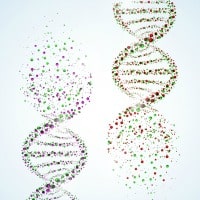Scientists have pinpointed a protein complex in the human body that guards cells against DNA damage. The research was performed at the University of New South Wales (UNSW). The finding could prove helpful for astronauts as well as humanity in general. Space travel heightens the risk of DNA damage due to exposure to cosmic radiation.The discovery might pave the way to a drug that reverses the aging process, boosts the repair of DNA and ultimately puts astronauts on Mars.
About the Research Team
The study’s lead author, Professor David Sinclair, is revered throughout academia and science circles. He teamed up with Dr. Lindsay Wu to win NASA’s iTech competition last year. The pair of scientists’ biological solution beat out the creations of 300 others in the competition. Sinclair and Wu have been working on the aforementioned anti-aging treatment for the past four years.
Research Details
The UNSW research team has identified an important step in the molecular process required for the repair of damaged DNA. The team used mice to perform experiments that ultimately led them to believe it is possible to treat DNA that has been damaged by radiation exposure and the aging process. The finding is so promising that it has caught the attention of NASA. Such a treatment might be the missing component needed to extend space travel to Mars and other faraway planets.
The cells in the human body are programmed to repair DNA damage. Yet the cells can’t repair such damage as effectively after years of aging. The UNSW researchers have determined the metabolite NAD+, which is found in each cell in the human body, plays an important role as a regulator in the proteins that are responsible for DNA repair. The team treated mice with the NAD+ precursor referred to as NMN. It boosted cells’ ability to repair damaged DNA after extensive aging and exposure to radiation.
Sinclair stated that the cells of the treated mice proved identical to those of younger mice. It took merely one week of treatment for this cell improvement to occur.
What NMN Means for the Future of Human Aging and Space Exploration
Though NMN testing has been limited to mice, it will soon be tested on human beings. Human trials will occur over the next six months. NMN therapy just might prove to be an effective and completely safe anti-aging drug. It could reach the marketplace in half a decade or less, depending on how the trials go.
The idea of an anti-aging drug seems somewhat like a pipe dream. However, if NMN therapy proves safe for human use, it could preserve the health of astronauts across a four-year voyage to Mars. It would also protect astronauts from cosmic radiation on shorter missions to boot. Such radiation exposure causes a variety of ailments ranging from memory loss to muscle weakness. A four-year trip to Mars results in the destruction of about five percent of astronauts’ cells. The odds of developing cancer as a result of such a trip are nearly 100 percent.
Cosmic radiation also poses a problem for people beyond astronauts. Anyone who rides an airplane is exposed to such radiation. An extensive flight subjects a passenger to as much radiation as would be produced by an x-ray. It is possible that NMN therapy could offset DNA damage caused by frequent flying. Even those who survive childhood cancer could benefit from the therapy. Upwards of 96 percent of childhood cancer survivors endure a chronic illness by the age of 45 as a result of accelerated aging. Perhaps the forthcoming anti-aging pill would help prevent such illnesses.




